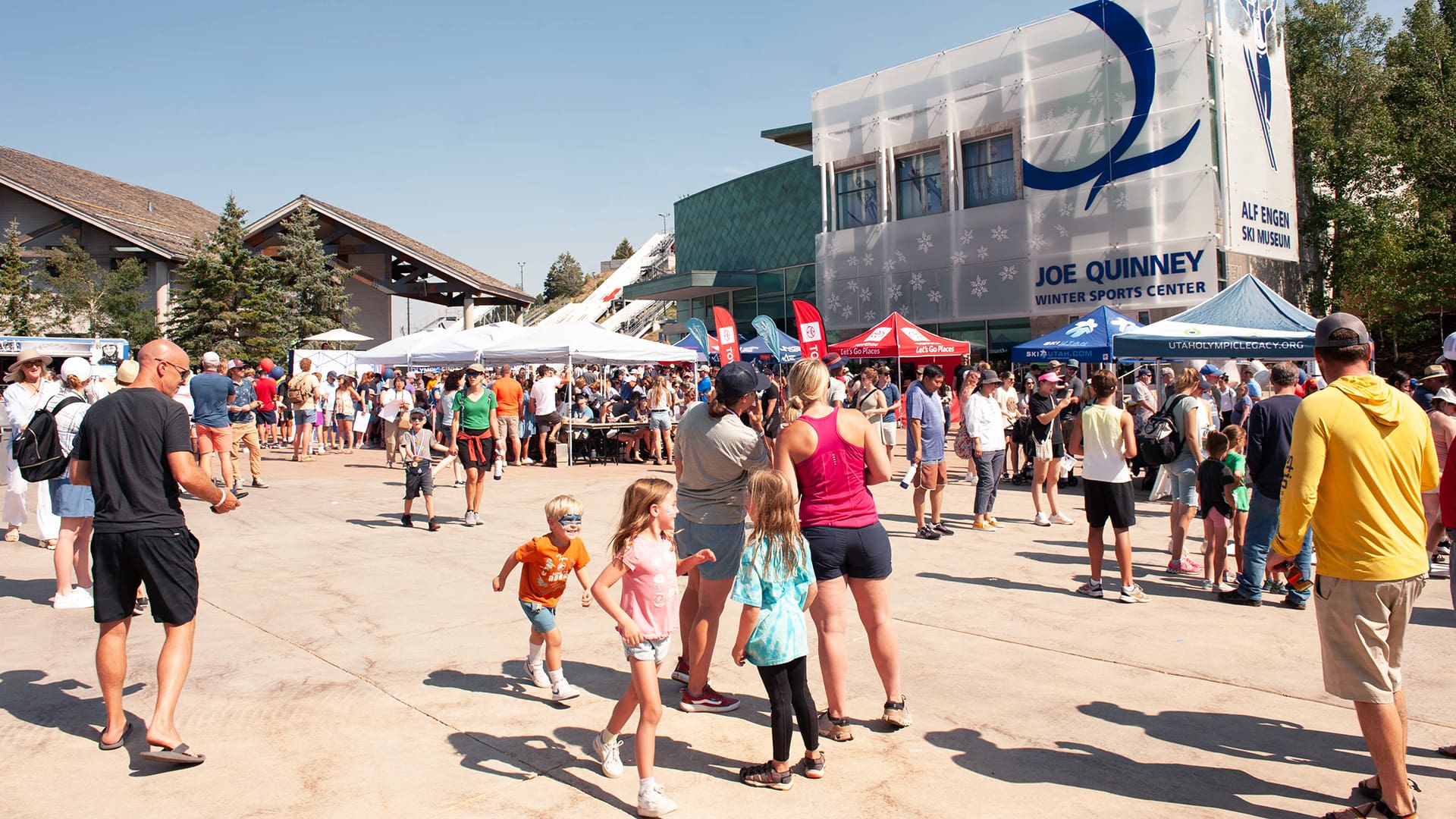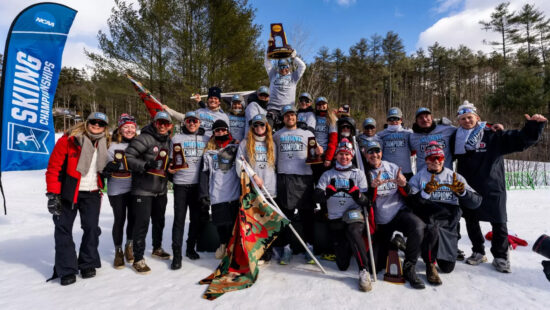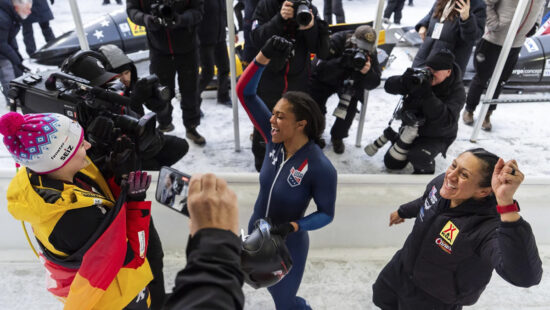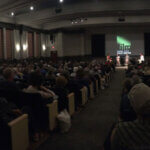Sports
Ice-making begins on Park City’s bobsled/skeleton/luge track
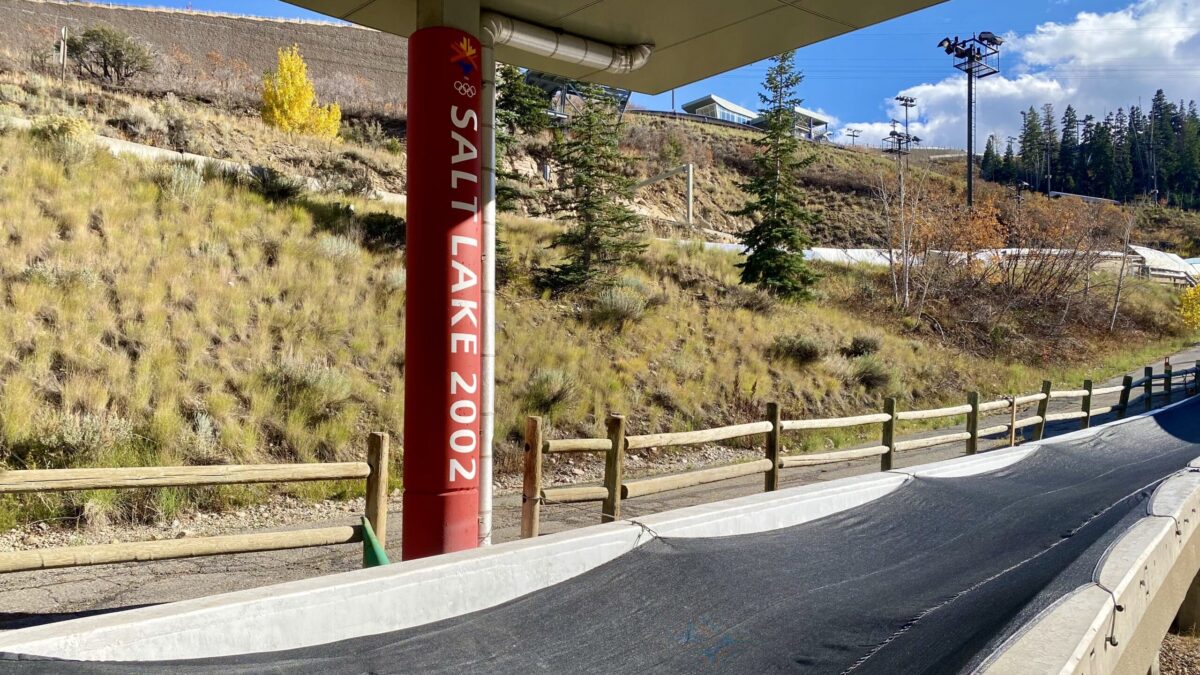
Utah Olympic Park's bobsled/skeleton/luge track ice-making process includes these black shades protecting the freshly-made ice from the sun's strong rays. Photo: Michele Roepke // TownLift
A multimillion-dollar custom system of shades facilitates ice-making, as do a small fleet of vehicles which fit inside the Utah Olympic Park track
PARK CITY, Utah — Even though it was 65 degrees on Saturday, Utah Olympic Park’s bobsled/skeleton/luge track crew flipped the switch to start its annual ice-making process.
Unlike the ski resorts adjacent to the park or even the ski runs adjacent to the track, they don’t have to wait for fall temperatures to fall to the 30s to start making preparations for winter operations. A refrigeration plant takes care of it and makes up for the difference in outside air averages. The cold permeates through the concrete of the track and is allowed to become thick enough to then shape ice.
There’s a certain dichotomy at the track. The nearby ski runs, mere yards away from the track, make snow which blows through the air via wind and inadvertently settles in the bobsled/skeleton/luge track. For the safety of the sliders, the crew spends every day, all day, shoveling out every snowflake or preventing the human-made or naturally-falling flakes from ever getting inside the walls of the track.
A multimillion-dollar custom system of shades facilitates that process, as do a small fleet of vehicles which fit inside the track. One of the vehicles came from Canada, and one from Italy. There are also a multitude of hand-held tools, tools you can’t buy at a hardware store, utilized to create smooth, thus safe, ice for every athlete for every run.
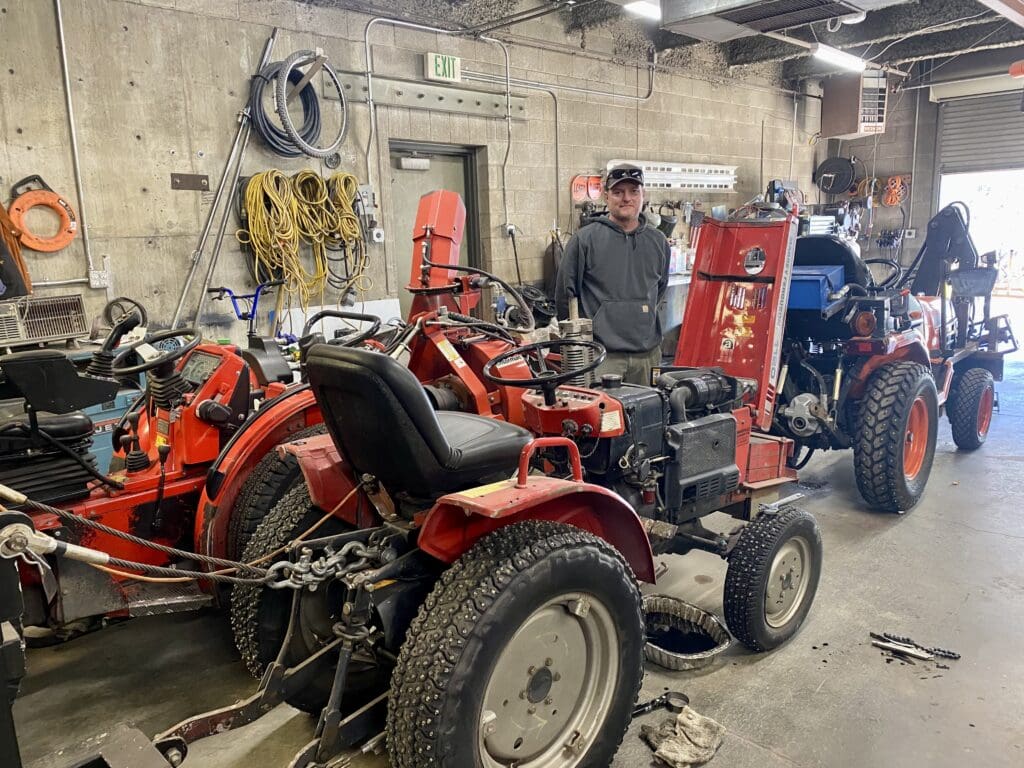
The man in charge of the bobsled/skeleton/luge track is R.J. Shannon, track manager, who is in his 20th year at UOP. He told TownLift, “Ice-making has been going incredibly smoothly so far this week. Over the summer we repaired the shades that got damaged from the heavy snow loads of the massive snowfall totals from last season. The tenacious track crew ended up measuring the sheer volume of snow shoveled last year in what seemed like metric tons.”
The first sleds are scheduled to go down the track on Nov. 1. in a private party rental, then the public can purchase recreational bobsled rides for $225 per person. Riders must be 16 years or older and weigh 100 pounds or more. Mostly set after the ski resorts close for the day, the passenger experience, which takes less than a minute ,often sells out.
Tickets may be purchased here.
Public also rides occur in between sliding sessions by local teams, mainly coached by Olympians, and national teams in town too.
The rides have three people in the back of a bobsled with a certified professional pilot in the front, fourth seat. Pilots must drive at least 60 perfect trips down the track before achieving certification, not to mention the hundreds if not thousands of runs they’ve amassed since.
Hand-hauling heavy hoses up and down the track to ensure a fine mist of water can be sprayed atop the ice, a process known as spritzing, is one of the many physically grueling tasks for the crew. All while wearing creepers on their heels with metal spikes for stability.
Of the 18-person track crew, some have been in position for 25 hours, while they are learning this ice-making week-and-a-half from colleagues who’ve been doing this for 25 years. On Tuesday, a 25-year veteran ssaw omething he’s never seen at the track, a couple of wild turkeys meandering around the trails alongside.
The majority of the crew of this temporary ice-making period are on the day shift and the rest are on the nights, just to make sure the ice gets created flawlessly in this crucial stage and thus stays fast for the athletes throughout the winter.
The track lights, visible from all over the Kimball Junction neighborhood areas, have been on as a result, and will be on many nights during the winter.
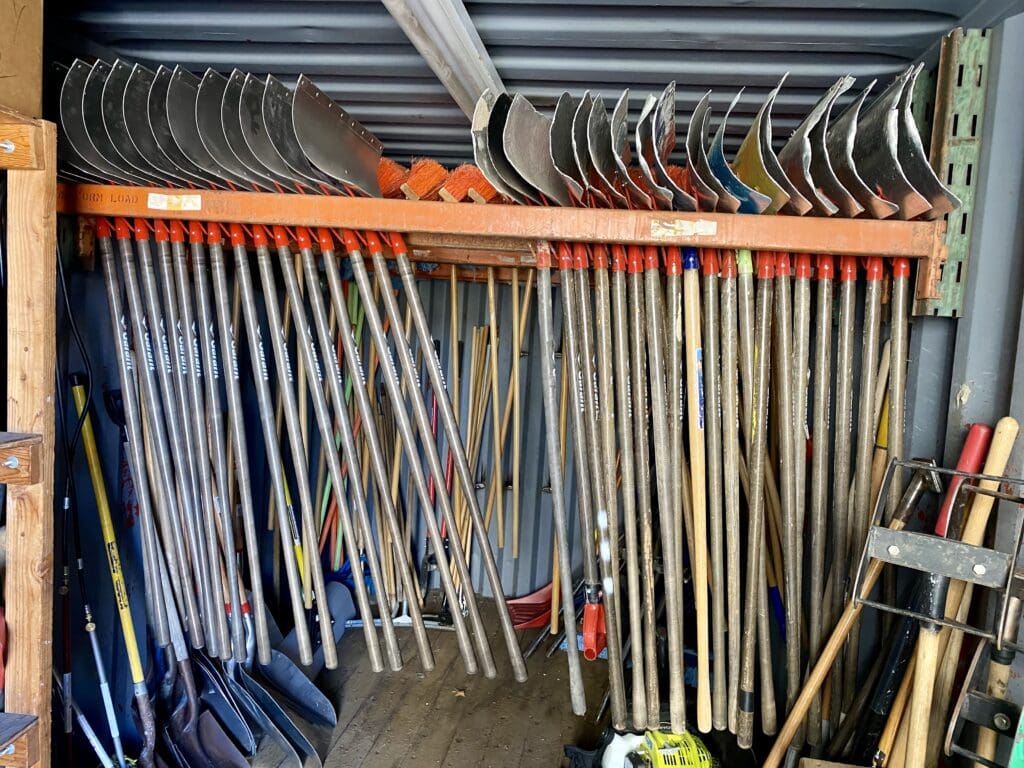
Each track is designed and engineered differently from country to country. Only two elements are required to be built-in; a circle, or kritsel in German, and a chicane, in French, a successive right, left, right turn sequence. Park City’s chicane is in the middle of the track, the section nicknamed Albert’s Alley after Monoco’s Prince Albert. Not only did he pilot his nation’s sled here in the Salt Lake 2002 Olympics but he’s been a member of the IOC.
The UOP’s kritsel is at the end of the track and is large enough to fit ropes courses, zip lines, spectator viewing areas, stadium-style seating, food truck space, official cars, trees and the Tower, the building which is the communications center of it all. By comparison, some tracks’ kritsel is purposely barely big enough to fit a car or maybe two. Therefore, G-forces approach six and seven on those tighter turns.
Utah’s track has 15 curves, some have 10, some have 20.
An unwritten, global sliding-community reciprocity exists that shares staffing among nations. When a bobsled, skeleton, or luge World Cup, World Championships, or Olympics takes place, sometimes a member of a track crew from around the world gets invited to work the ice at the event and is flown in to do so.
Elite local, national and international athletes will get a chance to enjoy the fast ice this season during not only a bobsled/skeleton North America’s Cup race but also two Jr. Luge World Cups. As always, it’s free for spectators.
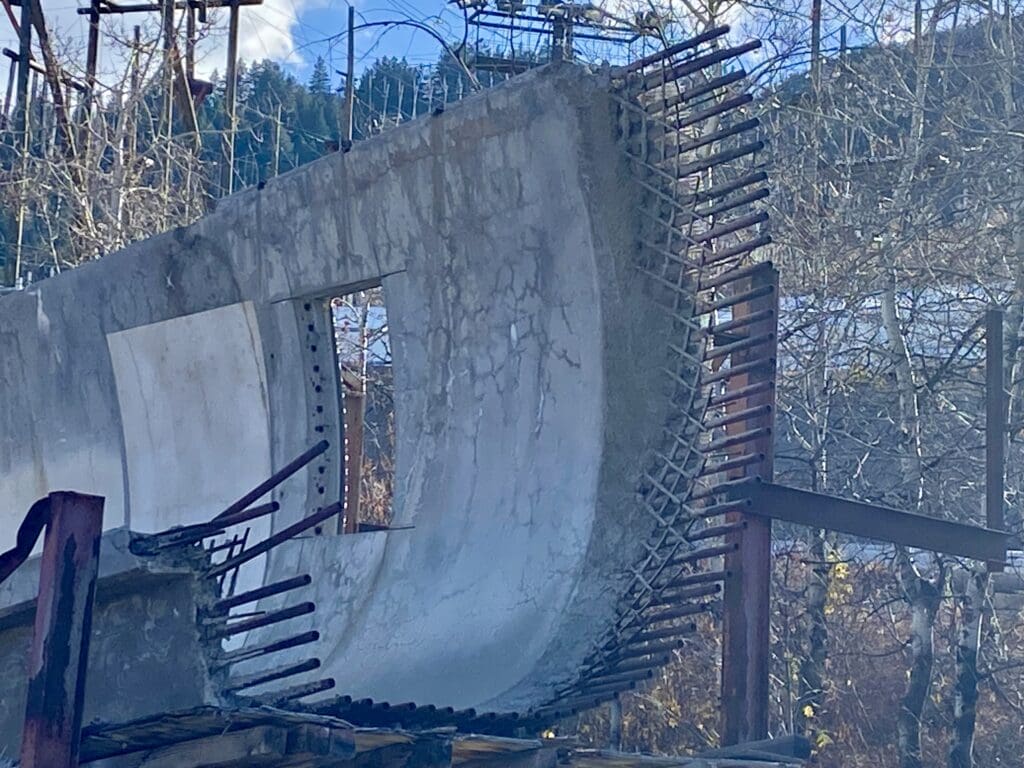
Ever notice in the Olympics how luge is always first, skeleton is second, and bobsledding is the final sliding sport? That’s by design because luge sleds going down the track don’t really have much of a destructive quality to the ice being smoothed out by hand during the TV commercial breaks. Skeleton sleds are relatively kind to the ice as well. Bobsleds, on the other hand, can take huge chunks of divots out of the ice, which need to be slushed-in with a trowel before the next sled.
As talk turned to future Olympics being hopefully held at this Park City venue, Shannon, the track managers, said, “We thoroughly enjoy the community support and are excited to be in the bid process. With continual capital improvements and upgrading of our systems, our track maintains a perpetual state of Olympic readiness.”
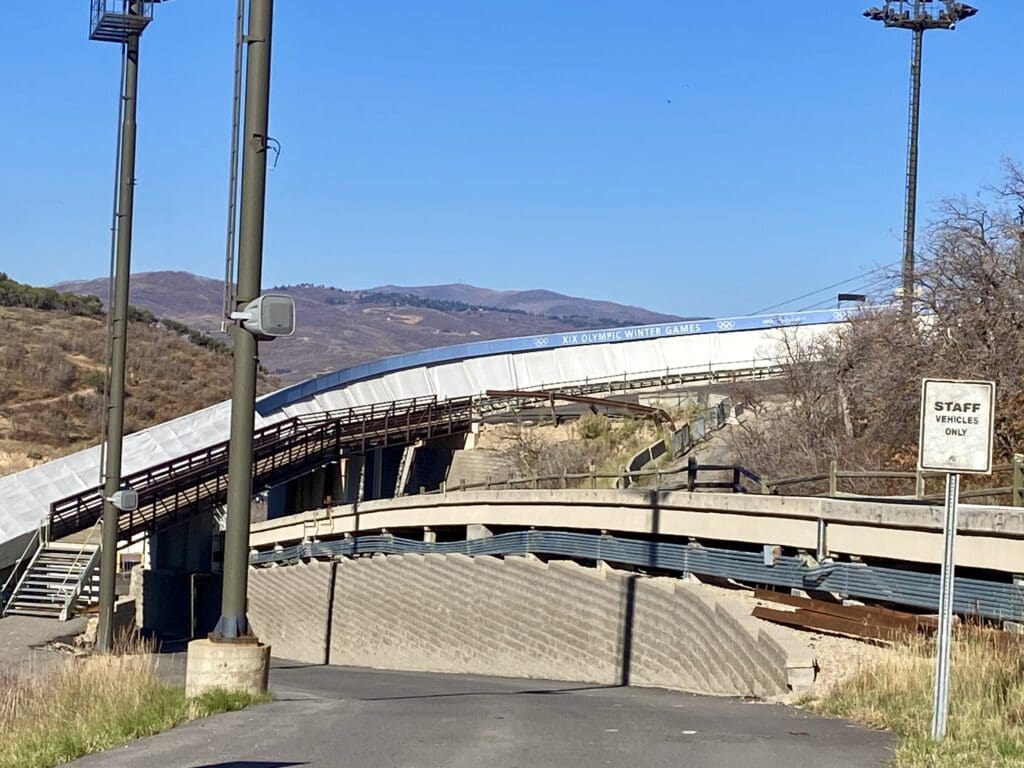
In the Spring, around about the beginning of April, the switch in the Plant will be turned off and the ice will simply melt.















